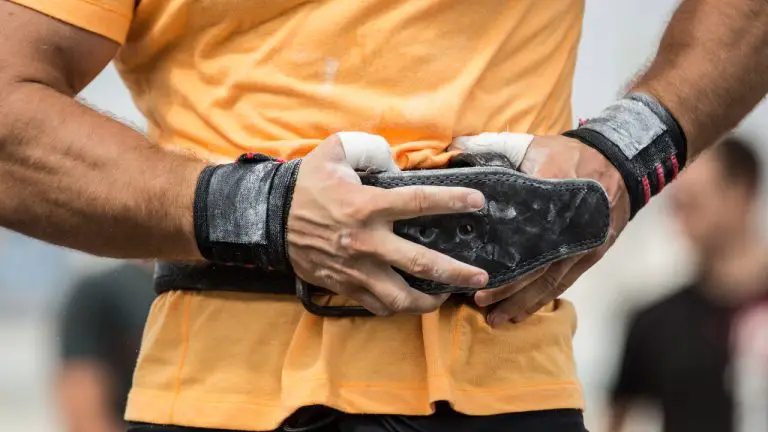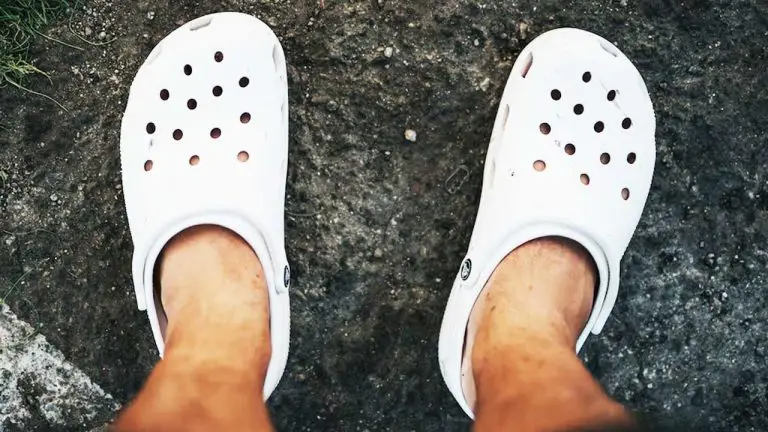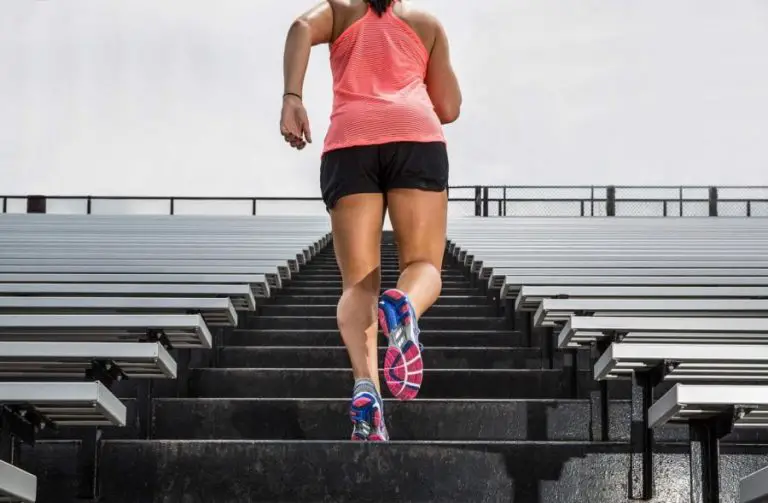Strength Training with Shin Splints – All You Need To Know
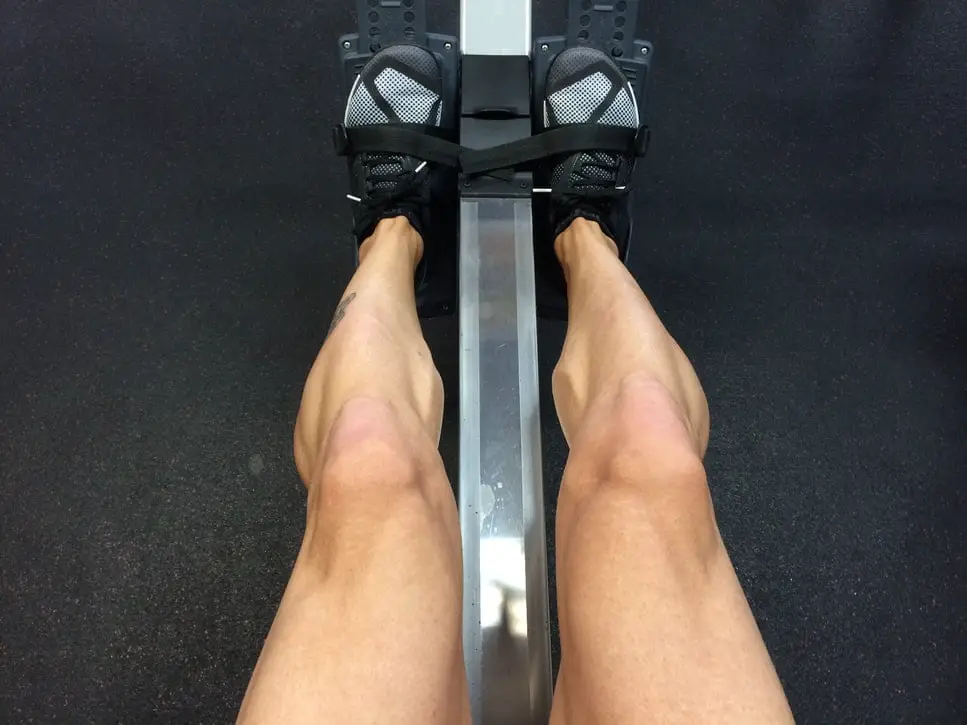
ListedFit is reader-supported. When you buy through links on our site, we may earn a small commission.
Shin splints, a common ailment for many, it can be a challenging obstacle to overcome when embarking on a strength training routine.
This condition, marked by pain along the front or inner part of the lower leg, is typically caused by repetitive stress on the tibia, resulting in inflammation, tenderness, and pain.
Nonetheless, it is possible to effectively engage in strength training while managing shin splints, provided that proper technique, precaution, and exercises are implemented.
Understanding the nature of shin splints is crucial for designing a comprehensive, safe, and effective strength training program.
Key Takeaways
- Engaging in strength training with shin splints requires understanding the condition and addressing muscle imbalances.
- Incorporating appropriate stretches and alternative cardio activities can reduce the impact and pain of shin splints.
- Focusing on prevention and recommended recovery techniques allows individuals to overcome limitations and progress in their strength training regimen.
Whether you can or can’t partake in strength training with shin splints is a common question.
Shin splints can occur for the following reasons.
- Flat feet are a common source of shin splints. A person who does not have an adequate arch may find the impact of their steps to be more than they should. If your foot arches collapse, this is called overpronation.
- Another common cause of shin splints is wearing ill-fitting shoes. You need a shoe with an overall good fit and plenty of support, especially if you are running or participating in weight lifting.
- If you do not stretch and warm up enough before exercising, you can also experience shin splints. These will especially occur when running.
- If your core muscles or leg and ankle muscles are weak, they make you more susceptible to shin splints.
In This Article…
What Are The Symptoms of Shin Splints?
Once you have experienced shin splints, you never forget the painful burning. It is important to understand the symptoms of shin splints, so you can act quickly when they strike.
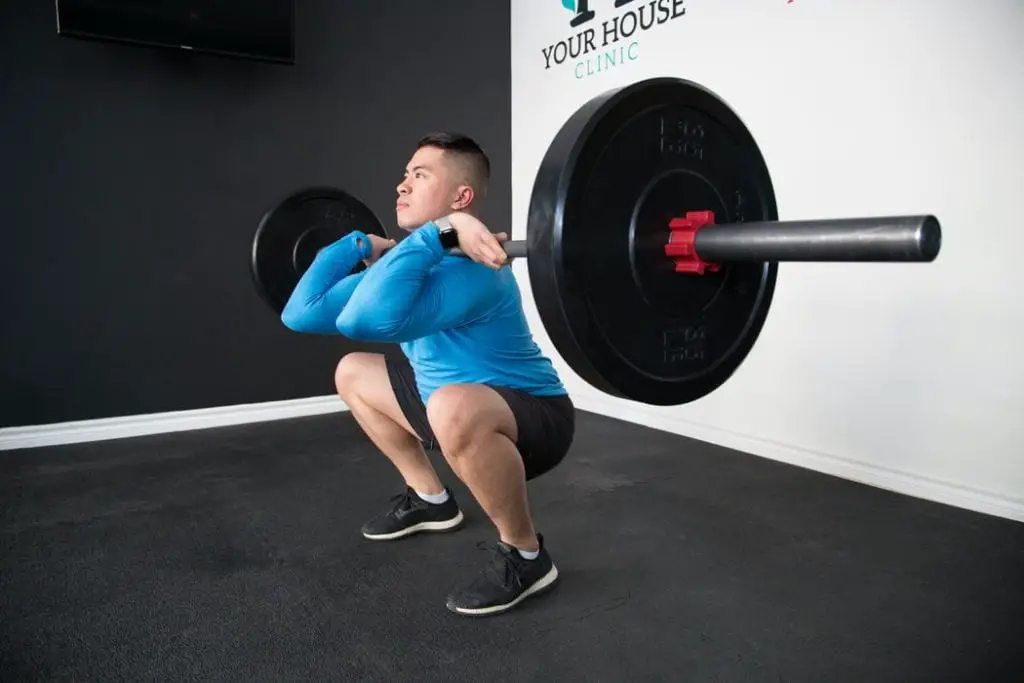
- Pain and/or tenderness just below the knee
- Bone and joint pain that worsens when you exercise
- Pain when you have stood for long periods
- Bruising and burning in the shin areas
- An inability to walk or run without pain
Treatment for shin splints involves resting your body and icing your shin bones. You should apply ice to your shins for twenty to thirty minutes every three to four hours.
You may also take over-the-counter non-steroidal anti-inflammatories.
You will know you are ready to get back to working out when your leg feels strong again and flexes just as well as your other leg. Start lightly jogging, and if there is no pain, ease back into exercise.
What Causes Shin Splints? Causes and Risk Factors
There are several factors that may contribute to the development of shin splints. Some of the common causes and risk factors include:
- Overuse or sudden increase in training: A rapid increase in the intensity or duration of exercise can strain the muscles and tendons, leading to inflammation and pain in the tibia.
- Inadequate footwear: Worn-out or inappropriate shoes for the specific activity can increase the risk of shin splints by providing insufficient support and cushioning.
- Poor biomechanics and muscle imbalances: Weak or inflexible muscles in the lower leg can contribute to the development of shin splints. Muscle imbalances may also alter the biomechanics of the lower leg, placing additional stress on the tibia.
- Running on hard or uneven surfaces: Running on concrete or other hard surfaces can contribute to shin splints, as it increases the impact on the lower leg. Additionally, uneven terrain can lead to excessive pronation or supination of the foot, which can stress the shin muscles.
Why You Should Strength Train with Shin Splints
Strength training (in the right way) can help alleviate and prevent shin splints by targeting the muscles surrounding the shin bone and improving overall stability and support in the lower leg.
If you focus on incorporating specific exercises into your workout you can help recover much fast but also lessen the likelihood of the shin splints coming back.
Though strength training is a crucial component in treating and preventing shin splints, it is essential also to pay attention to other factors such as proper running form, appropriate footwear, and gradual increases in training volume.
Exercises and Stretches for Recovery
Incorporating the right exercises and stretches into your routine can significantly help in the recovery process of shin splints. It is important to focus on strengthening the muscles in the lower legs, as well as improving flexibility to reduce strain on the shinbone.
Heel Drop Stretch: This stretch targets the calves, which play a major role in supporting the shinbone. To perform the heel drop stretch, stand on the edge of a step with your heels hanging off the edge. Slowly lower your heels down until you feel a stretch in your calf muscles. Hold for 15-30 seconds and repeat 2-3 times on both legs.
Calf Raises: Calf raises can help in strengthening the calf muscles and reducing shin pain. Stand with your feet shoulder-width apart, and slowly raise your heels off the ground, putting weight on the balls of your feet. Hold for a few seconds, and then slowly lower your heels back to the ground. Repeat 8-12 times for 2-3 sets.
Single-Leg Glute Bridge: This exercise strengthens the glutes, hamstrings, and hip stabilizers, which can help in supporting the lower leg. Lie on your back with your knees bent and feet flat on the ground. Extend one leg straight out, keeping it parallel with the other knee. Push through the heel of the foot on the ground to lift your hips off the floor. Hold for a few seconds, then lower back down. Perform 8-12 repetitions and switch to the other leg.
In addition to these exercises, it is crucial to include stretching to maintain flexibility in the muscles of the lower legs. Some useful stretches include:
- Toe Raises: While sitting, stretch your legs out in front of you and flex your toes upwards. Hold for 15-30 seconds and relax. Repeat 2-3 times on both legs.
- Wall Shin Stretch: Stand facing a wall and place your hands against it. Lean into the wall with one foot closer and one foot further back. Keep the back leg straight and press the heel into the ground. Hold for 15-30 seconds and switch legs.
- Seated Shin Stretch: Sit on the edge of a chair with one leg extended, keeping the other foot flat on the ground. Rotate the extended leg inwards so that the inner part of the foot is resting on the ground. Gently lean forward, keeping your back straight, until you feel a stretch in your lower leg.
Can You Get Shin Splints from Weight Lifting?
Shin splints are generally brought on with high-impact movements such as those involved in running and jumping.
Because most weight lifting is not high impact, the vast majority of people do not experience shin splint pain because of lifting.
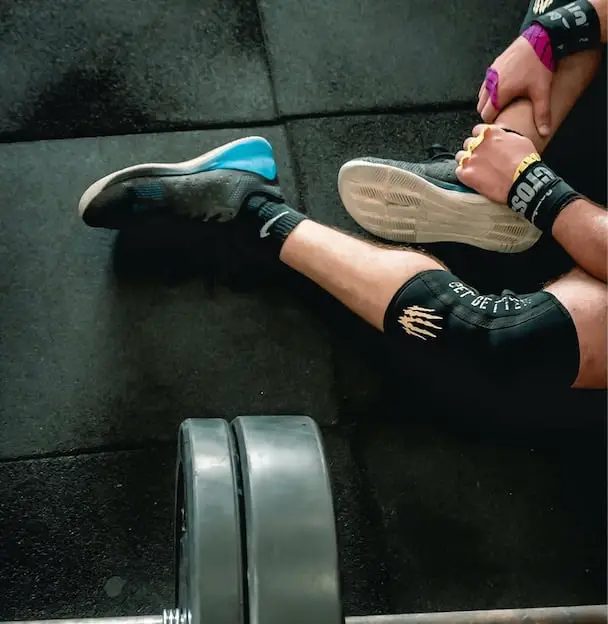
That being said, starting with too much intensity can cause your calf muscles to over-tighten, which could place pressure on your tibia and cause pain.
If you are already prone to shin splints or suffering from them, you should ease back into weight lifting only after healing has taken place.
If you are a lifter, you must warm-up well before each session.
There are targeted exercises that can help to stretch and warm-up your legs and prepare them for weight lifting without pain.
Wall shin raises, heel step-downs, calf stretches, and shin resistance exercises are all beneficial in helping protect against shin splints.
Do Shin Splints Heal Back Stronger?
When you work out, muscle tissue is stretched to its limit, and damage must be done so the muscle tissue can grow stronger.
In much the same way, bone tissue bends slightly as you run, allowing your leg to spring.
When you rest after an intense run, the bone regrows and becomes stronger.
When you work out, muscle tissue is stretched to its limit, and damage must be done so the muscle tissue can grow stronger. In much the same way, bone tissue bends slightly as you run, allowing your leg to spring.
When you rest after an intense run, the bone regrows and becomes stronger.
After shin splints, your tibia goes through a lot of stress, and the soft tissues need time to heal.
You must rest your legs after shin splints have developed or the healing time will be lengthy and more painful.
Inexperienced runners can often experience shin splints because they do not prepare their bodies or they have weak hip abductors and calf muscles, which place undue pressure on the shinbones.
Experienced runners can also get shin splints when they increase their intensity too quickly, without being prepared fully.
Women are more likely to experience shin splints because of lowered bone density, along with people who have higher body mass indexes.
Yes, shin splints can heal stronger, but you must protect your bones and connective tissues with rest, once they become inflamed. Rest, ice, and anti-inflammatories will become your best friends.
Can You Still Work Out with Shin Splints?
Although you should rest until your pain subsides, you do not have to give up your workouts.
Thankfully, some workouts do not cause shin splint pain and can even be carried out as you are healing.
Keep in mind, if you experience any pain in your shins, stop immediately.
This means you are either not ready to work out just yet or you are doing the exercises improperly.

To maintain fitness while you are recovering from shin splints, try the following exercises.
- Swimming is an excellent sport for recovering from shin splints. Water removes the weight placed on joints. To get the most from your water workout, try practicing your running form and vary your swimming strokes.
- Rowing is a great workout for recovering from shin splints. It does not put too much pressure on the shins, and you can increase or decrease the intensity level for your comfort.
- Elliptical machines are ideal for shin splint sufferers because they offer a full-body workout with virtually no stress to the lower body. Make sure to retain good posture and vary your routine.
- Strength training should not cause any undue pressure on your shins. Make sure to start with light workouts. When in doubt, consult with a personal trainer to ensure you are getting the most from your workout, without putting too much pressure on your recovering legs.
Can You Get Shin Splints on a Treadmill?

Unfortunately, running on a treadmill can and does cause shin splints for many people.
Although you are running on a flat surface, the treadmill mimics a downhill run.
This is because when your leading foot makes contact with the treadmill belt, the backward motion takes hold of your heel quicker than running on a paved surface would. This action pulls the forefoot onto the belt.
As most runners know, it takes a lot of leg strength to run downhill. If you run on the treadmill a lot, it is important to slightly increase the incline, and this should help to prevent shin splints from occurring.
When using a treadmill, make sure to practice safe running. Use the right incline and speed to ensure you are getting the most out of your treadmill run, without causing any injuries to yourself.
The goal of running on a treadmill is for you to control the action. Instead of allowing the treadmill to pull you backwards, you should aim for pushing the belt backward.
This will help to strengthen your leg and feet muscles while keeping you in proper form to prevent so much stress from being placed on your shins and knees.
Can You Squat with Shin Splints?
Many people want to know if they can continue to squat with shin splints, and the answer is mostly yes.
Recovering from shin splints should not be prohibitive of your squatting workout, though you should listen to your body.

You will need to take a “try and see” approach to squatting.
If it causes you any increased pain in your shin areas, you are either not ready for workouts or are in an improper form.
When squatting with shin splints, it is important to use a comfortable weight and form.
Many people are successful doing squats as they recover, but they learn to adjust according to their pain level.
When it comes to shin splint remedies you use to help you prevent or recover from the pain of shin splints, there are a few things worth trying.
3 Things to Help With Shin Splints – Tools That Can Help with Recovery and Prevention
1. Calf Compression Sleeve
You may have heard that calf compression sleeves can help with shin splints. A good quality calf compression sleeve will support and stabilise the lower leg muscles and tendons, which can help relieve the pain and discomfort of shin splints. The compression of the sleeve helps to reduce inflammation and improve circulation, which can lead to faster healing and recovery. Additionally, calf compression sleeves can also help to reduce fatigue and prevent future shin splints. If you’re dealing with shin splints, then calf compression sleeves are definitely worth trying out.
2. Calf Stretcher Rocker
The Calf stretcher rocker is a great tool for helping to alleviate the pain of shin splints and can be used to stretch your calf muscles to provide relief. It’s easy to use and doesn’t take up much space at all – just place it behind your calf, and then push down on the stretcher to provide a gentle stretch. You can do this a few times a day to help ease the pain of your shin splints.
3. Muscle Roller Stick
Using a muscle roller stick is a great way to relieve the pain of shin splints and prevent them from becoming an issue in the future. It works much like a rolling pin does, you can use the roller stick to massage the shin muscle and also the calf, increasing blood flow to the muscle and helping to loosen it.
Additionally, using a muscle roller stick can help to strengthen the area and make it less likely to suffer from shin splints in the future. So if you’re looking for a natural, effective way to treat shin splints, using a muscle roller stick is definitely worth a try.
What Can You Do to Lessen the Possible Pain/Effects?
Whether you are squatting or working out in some other way, knowing how to lessen the risks and prevent painful effects is integral.
Thankfully, there are a few things you can do to lessen the pain and prevent unwanted effects when working out while recovering from shin splints.
- If you are flat-footed, make sure to wear supportive arch orthotics in your shoes. These help to support this vulnerable area of your feet and prevent them from slapping against the pavement as you run. They also help with squats and just about any other type of exercise.
- Make sure to add shin exercises as a part of your warmup routine. These exercises will help to strengthen your muscles and bones, making you less vulnerable to shin splint attacks.
- Increase your mileage and intensity at only around ten percent a week, to gradually work your way up. Once you start to feel pain, stop immediately.
- Choose shoes that fit correctly, offer plenty of support, and are stable.
Strength Training With Shin Splints – Conclusion
Dealing with shin splints can bring on tremendous pain for many people.
Thankfully, you do not have to give up your workouts entirely, though you should listen to your body and take care of your injured shins.
Ice them and rest for the first few days and then gradually get back into a safe workout routine until you recover completely.
Frequently Asked Questions
What are the best exercises for rehabilitating shin splints?
The best exercises for rehabilitating shin splints involve gentle, low-impact activities, such as swimming and cycling, to avoid aggravating the condition.
Also, stretching and strengthening exercises that target the calf muscles, tibialis anterior, and other associated muscles can really improve the muscle imbalances and reduce the risk of an ongoing or repeating injury.
How can calf and shin strengthening exercises help prevent shin splints?
Calf and shin strengthening exercises can help prevent shin splints by addressing the main muscle imbalances, improving flexibility, and promoting proper biomechanics during running and other activities.
Strong, flexible calf and shin muscles are key, these make you better able to distribute impact forces which will in turn reduce the strain on the bones and connective tissues in your lower legs.
Which leg exercises should be avoided when dealing with shin splints?
If you’re experiencing shin splints you should avoid high-impact activities like running, jumping, and plyometric exercises but only if they cause you irritation and pain.
Instead, focus on lower-impact strengthening exercises and gradually reintroduce your higher-impact exercises as the condition improves over time.
The key here is to be patient, muscles take a while to repair.
How do hip exercises play a role in alleviating shin splints?
Hip exercises are vital for addressing potential muscle imbalances in the lower body, which can contribute to shin splints.
By improving your hip stability, strength, and flexibility, hip exercises can reduce overall stress on the lower leg muscles and tendons.
This helps to alleviate discomfort and makes future occurrences of shin splints less likely.
What are some effective shin strengthening exercises to combat shin splints?
Effective shin strengthening exercises include heel raises, toe raises, and resistance band exercises that target the muscles surrounding your shin.
These can help improve muscular endurance and strength, reducing the risk of shin splints and promoting healthy lower leg function for runners and other athletes.
Are there any recommended resources for shin splints rehab exercises?
There are several resources are available to help individuals design an effective shin splints rehab program.
A great resource I sometimes use for injuries like this is Bob and Brad.
If a YouTube video can’t help you with some basic exercises, then a physical therapist or sports medicine specialists should be able to provide a more tailored recommendation based more on your individual needs.
Author
Latest entries
 NutritionSeptember 29, 2025Does Collagen Work? I Tried It
NutritionSeptember 29, 2025Does Collagen Work? I Tried It GearJuly 20, 2024Headphones and Earbuds – Tried and Tested!
GearJuly 20, 2024Headphones and Earbuds – Tried and Tested! FitnessAugust 19, 2023Yohimbe vs Yohimbine: A Quick Comparison Guide
FitnessAugust 19, 2023Yohimbe vs Yohimbine: A Quick Comparison Guide AshwagandhaJune 16, 2023Is Ashwagandha Good for Working Out? Key Benefits Explored
AshwagandhaJune 16, 2023Is Ashwagandha Good for Working Out? Key Benefits Explored
Affiliates:
This post may contain affiliate links that at no additional cost to you, the site may earn a small commission. We only recommend products we would use ourselves and all opinions expressed on this site are our own.
General Advice:
The information provided in this article is for general informational purposes only. It is not intended as a substitute for professional advice. Always consult with a qualified healthcare professional before starting any new diet, exercise program, or making changes to your health routine.
Accuracy Advice:
While we strive to provide up-to-date and accurate information, the content in this article may not reflect the most current research or medical guidelines. We encourage readers to do further research and consult with professionals for more personalized advice.
Our Recommendations:
The products and services mentioned in any of our articles are recommended based on our independent research and personal experience. We are not sponsored by any company. We aim to suggest products and services we believe are of high quality and could be beneficial to our readers.

